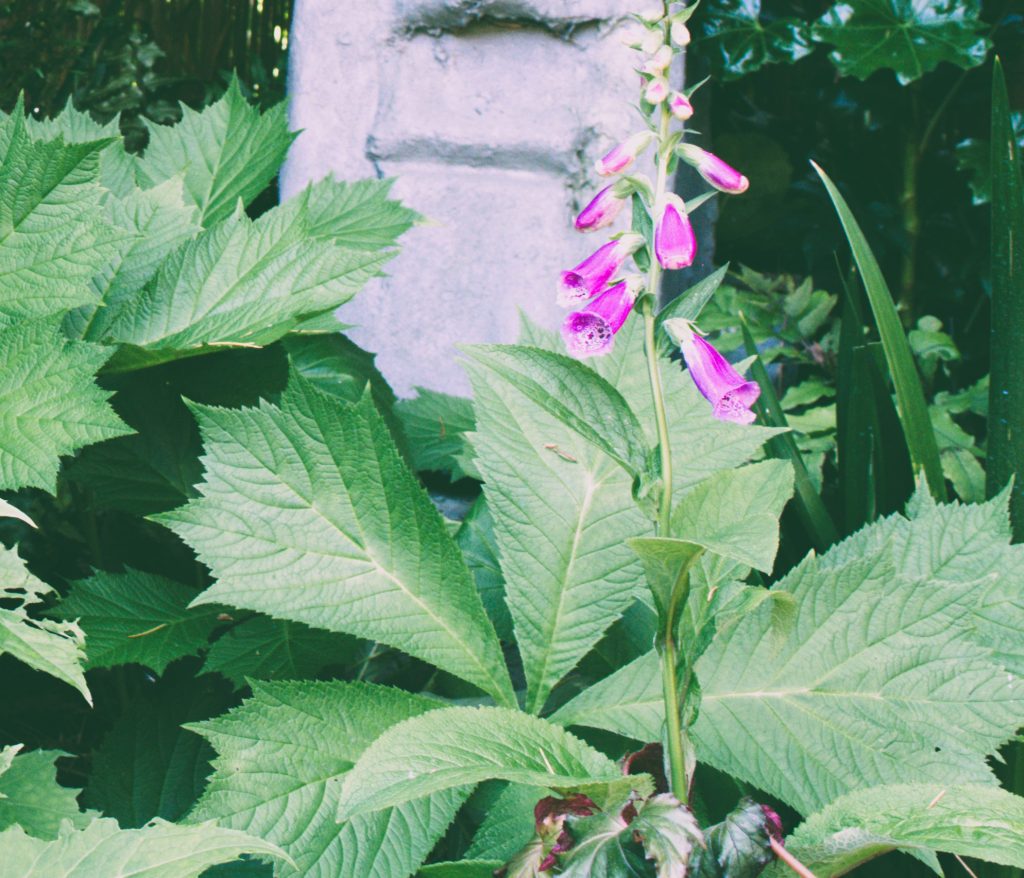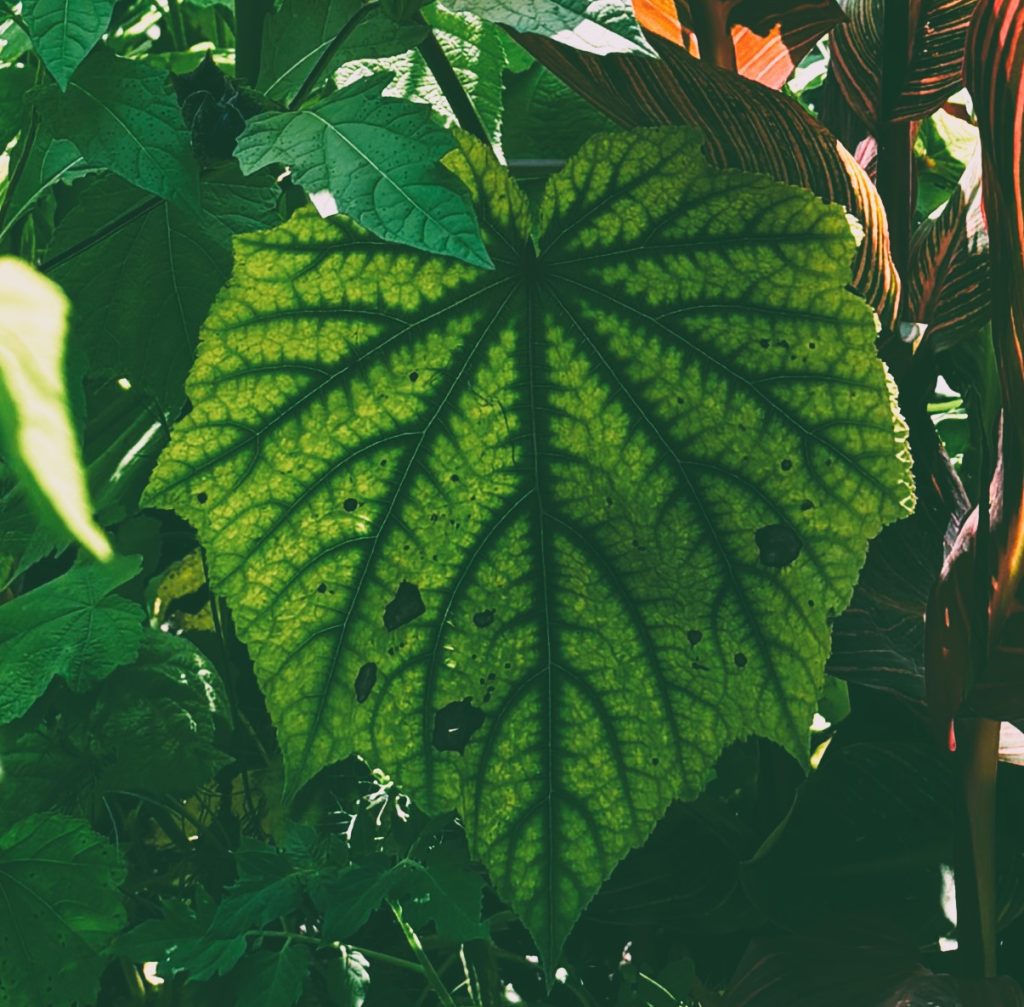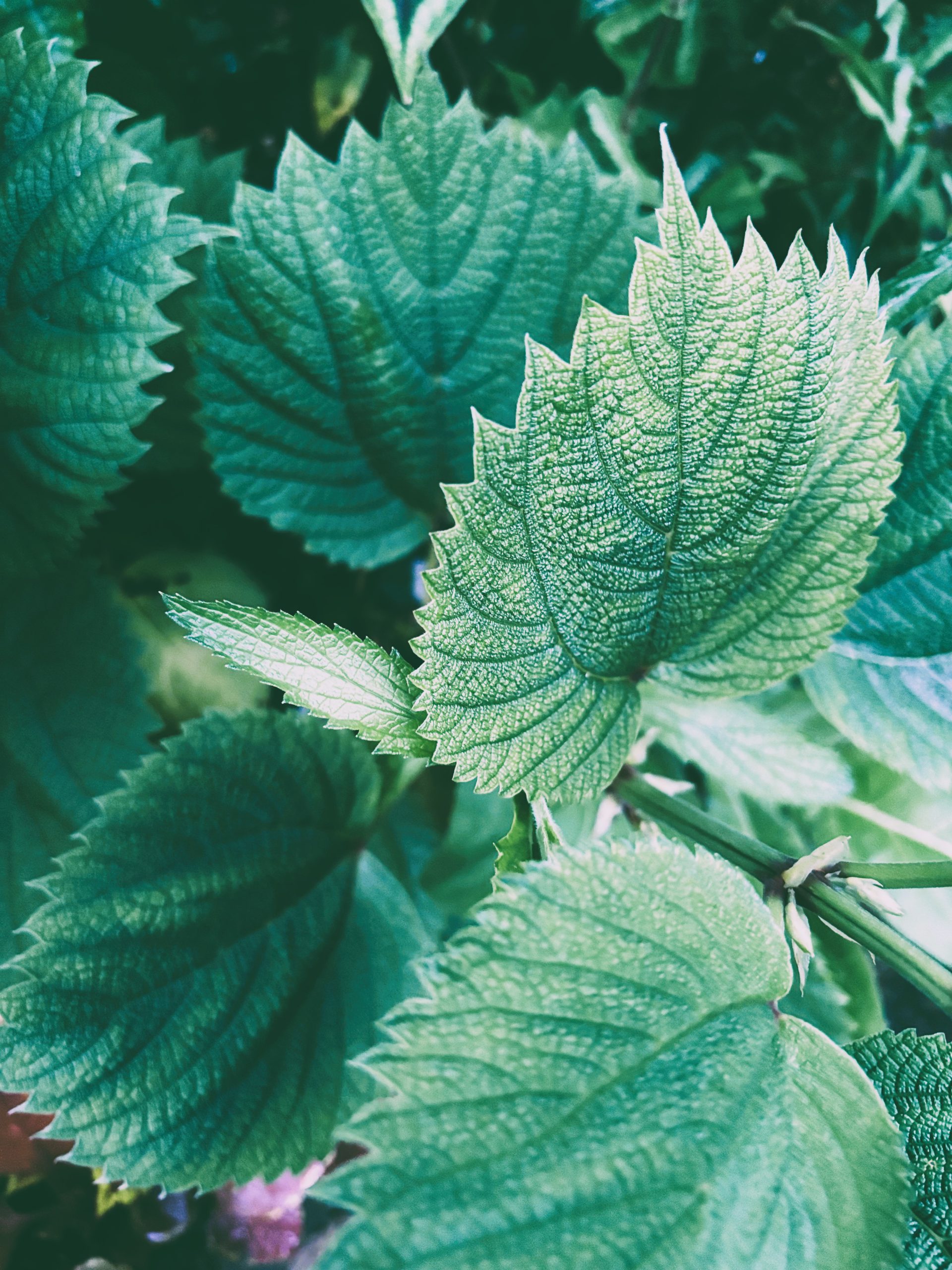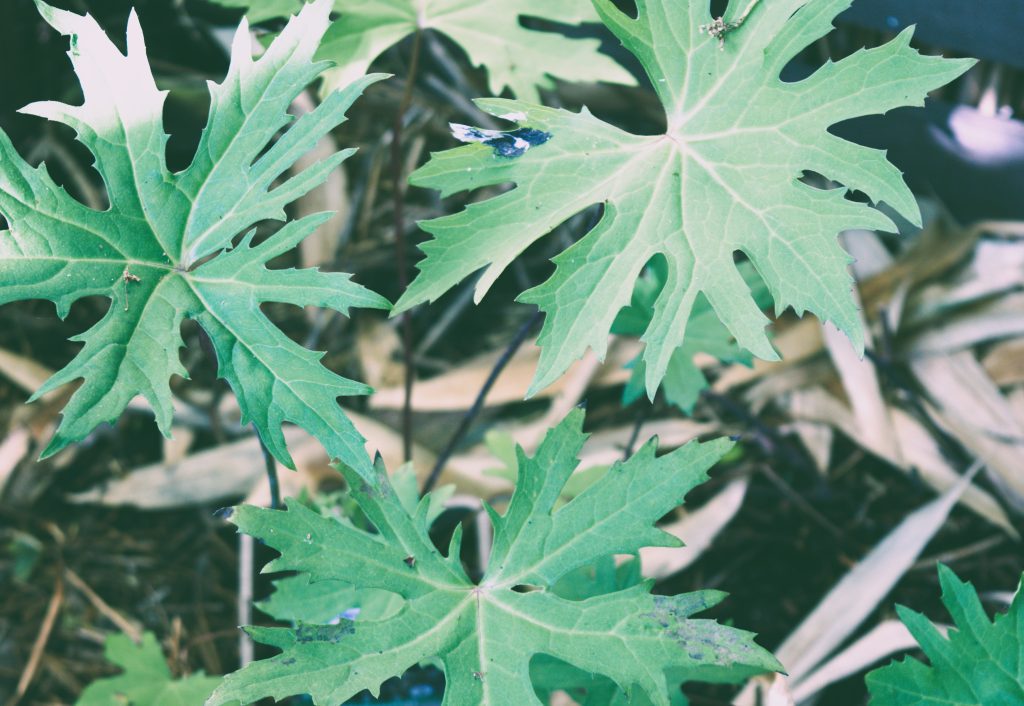Plants with serrated leaves bring dynamic texture and visual interest to any garden, especially a tropical-style one. Their distinctive edges and often large, lush foliage create a sense of wildness and untamed beauty. Here are five remarkable plants with serrated leaves that can thrive in a UK garden, adding both height and unique character.
1. Melianthus major
The Honey Bush
Melianthus major, commonly known as the Honey Bush, is a striking plant that instantly evokes a tropical atmosphere with its large, deeply serrated, blue-green leaves. Native to South Africa, this evergreen shrub can grow up to 3 meters tall and is known for its bold, architectural form.
Interesting Fact:
The name “Honey Bush” comes from the plant’s nectar-rich flowers, which have a sweet honey-like scent. However, it’s the foliage that truly steals the show, with its distinctive serrated edges and almost metallic sheen.
Position and Care:
Melianthus major thrives in full sun or partial shade and prefers well-drained soil. In the UK, it’s best planted in a sheltered spot to protect it from harsh winter winds. Although frost-tender, it can be cut back to the ground in spring, where it will regrow vigorously. Mulch in winter to protect the roots from frost.
2. Rodgersia (Rodgersia pinnata)

The Ornamental Wonder
Rodgersia pinnata is a herbaceous perennial that adds lush, serrated foliage to your garden, with leaves that resemble those of horse chestnut trees but with a more delicate, fern-like appearance. This plant is native to China and thrives in damp, shaded areas, making it ideal for adding texture to a tropical garden.
Interesting Fact:
Rodgersia is not just about foliage; it also produces tall, airy panicles of pink, white, or red flowers in summer, which add a soft contrast to the bold leaves. The flowers are particularly attractive to pollinators, making Rodgersia both a visual and ecological asset to your garden.
Position and Care:
Plant Rodgersia in a shady or partially shaded spot with rich, moist soil. It’s perfect for planting near water features or in woodland-style areas of your garden. Ensure the soil remains consistently moist, especially during dry periods. Divide the plant in spring or autumn to control its spread and rejuvenate older plants.
3. Sparmannia africana

The African Hemp
Sparmannia africana, also known as African Hemp, is a fast-growing shrub with large, serrated leaves that create an impressive tropical look. Native to South Africa, this plant can grow up to 3 meters tall, and its broad, heart-shaped leaves have a slightly rough texture, adding a tactile element to your garden.
Interesting Fact:
Sparmannia africana is one of the few plants with leaves that can move in response to touch, a phenomenon known as “thigmonasty.” This movement helps protect the plant from herbivores and adds an intriguing interactive element to your garden.
Position and Care:
Sparmannia africana prefers a sheltered position with full sun to partial shade. It thrives in well-drained, fertile soil and should be watered regularly to keep the soil consistently moist. In the UK, it’s often grown in containers so it can be brought indoors during winter, as it’s sensitive to frost.
4. Boehmeria biloba

The Bilobed Boehmeria
Boehmeria biloba is a lesser-known but fascinating plant that adds unusual texture and form to a garden. Native to East Asia, this herbaceous perennial features large, heart-shaped leaves with deeply serrated edges. The leaves are bilobed, meaning they are divided into two distinct sections, giving the plant a unique, almost prehistoric appearance.
Interesting Fact:
Boehmeria biloba is related to the nettle family (Urticaceae), but unlike its stinging relatives, it’s completely safe to touch. The plant’s fibrous stems have historically been used in textile production, particularly in Japan.
Position and Care:
Plant Boehmeria biloba in a partially shaded location with moist, well-drained soil. It thrives in sheltered spots where it’s protected from strong winds. Regular watering is essential, especially during dry spells. It’s a low-maintenance plant that benefits from occasional pruning to maintain its shape and size.
5. Ligularia przewalskii

The Rocket Ligularia
Ligularia przewalskii, also known as Przewalski’s Ligularia, is a bold and distinctive plant that can add both height and dramatic foliage to your tropical-style garden. This plant features deeply serrated, palmate leaves and tall, spiky flower stems that create a striking visual impact. Native to mountainous regions of China, Ligularia przewalskii is well-suited to the UK’s temperate climate.
Interesting Fact:
Ligularia przewalskii is named after the Russian explorer Nikolai Przhevalsky, who discovered the species during his expeditions in Asia. The plant’s tall, yellow flower spikes resemble rockets or candles, adding a vertical accent to your garden.
Position and Care:
Ligularia przewalskii prefers partial shade and moist, rich soil. It’s an excellent choice for planting near water features or in bog gardens where the soil stays consistently damp. To prevent wilting, place it in a spot where it receives morning sun and afternoon shade. Mulch around the base in spring to retain moisture and keep the roots cool.
Enhancing Your Tropical Garden’s Texture
Incorporating plants with serrated leaves into your UK tropical-style garden adds not only height but also a sense of texture and movement. Melianthus major, Rodgersia, Sparmannia africana, Boehmeria biloba, and Ligularia przewalskii each bring unique leaf shapes and interesting histories, making them perfect choices for creating a lush, layered garden. By selecting the right positions and providing the necessary care, these plants will thrive, adding depth and exotic flair to your outdoor space.

